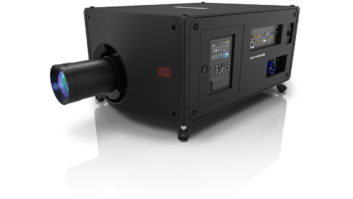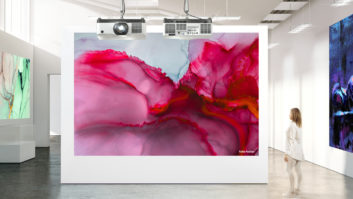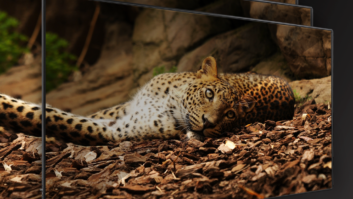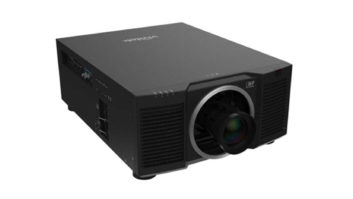A range of AV, communications, and professional display offerings is on show from Sony, including what the company claims is the world’s first 4K ultra short throw laser projector. The VPL-GTZ1 features 2,000 lumens of brightness and a powered zoom ratio of 0.16:1 to 0.25:1. It also has four HDMI inputs.
Designed, says Sony, for applications where high impact visuals are required, such as executive board rooms, art galleries, museums, simulation and command and control, its ‘blend-in’ design is claimed to fit nearly any installation environment. Low fan noise minimises audible disruption, and the projector can be floor-standing or ceiling-mounted for front or rear projection.
Also being showcased by Sony is a 7,000 lumen 3LCD laser projector. Sony says that the new VPL-FHZ700L is the world’s brightest laser projector. Designed for boardrooms and classrooms, the VPL-FHZ700L and VPL-FHZ55 3LCD deliver up to 20,000 hours of maintenance-free projection at WUXGA resolution (1,920 x 1,200), instant on/off, tilt-angle-free design, edge blending and wide range vertical/horizontal lens shift. The VPL-FHZ700L is also said to offer integration flexibility, with multiple interfaces and seven optional lenses.
Lastly, Sony’s upgraded version of its presentation solution, Vision Presenter, brings together videos, images and PowerPoint slides on a single screen controlled with the swipe of a finger. The upgraded version features previewing and mirroring content; HDCP-supported connections including Blu-ray, PS4, Miracast, Chromecast, and Apple TV-Airplay; direct IP H.264 video and IP control connection with the newest Sony PTZ camera, the SRG-300SE; multiple display variations for more flexible solutions such as single screen, 4K screen, dual screen, edge blend and triple screen plus a secondary monitor output for recordingstreaming of Vision Presenter content; and expanded file support and content interaction – for example, zoom, area setting, annotation and comparison viewing manipulation.






